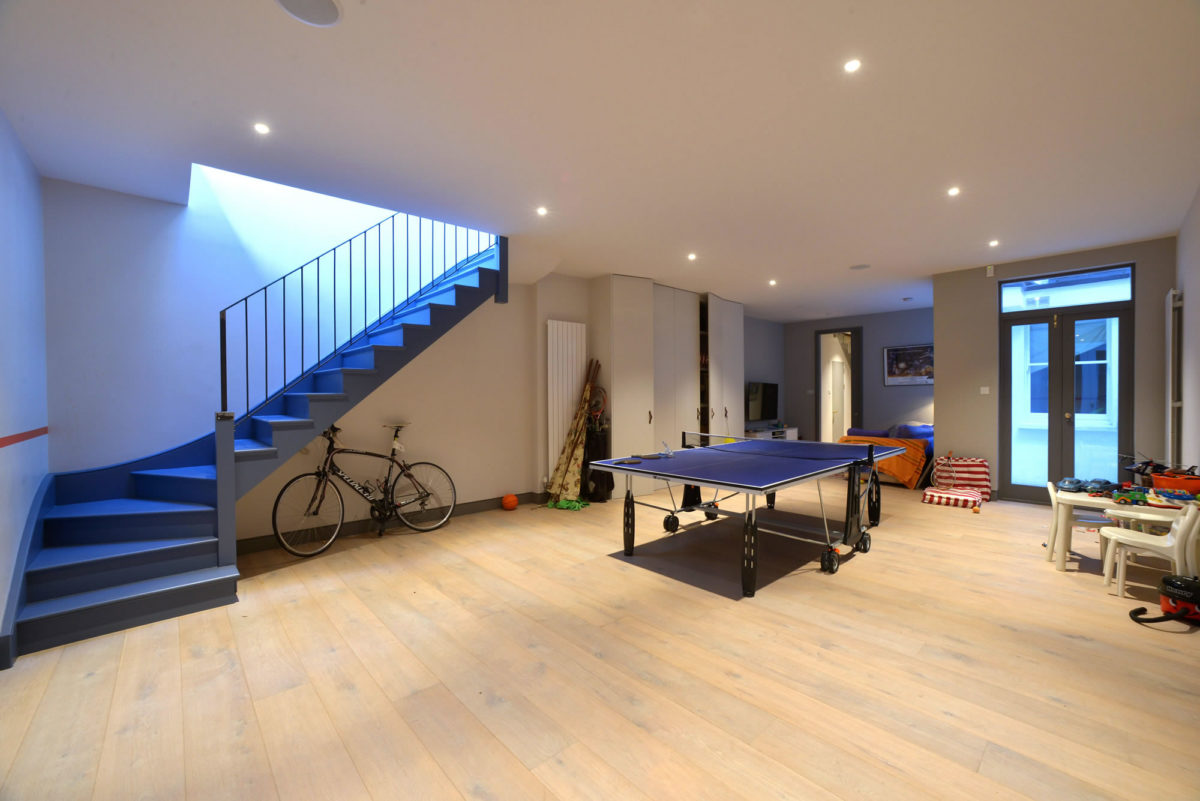Havona House in Pembridge Villas is on sale, and has become Notting Hill’s most expensive property listing. It’s on the market at £25m and one of its key selling features is its amazing two level basement conversion, reckoned to be one of the largest in London (that is until another billionaire comes along determined to have a bigger one).
The upper floor of the basement is an underground garage, dubbed the “bat cave” by those who’ve seen it. State of the art technology allows three cars to be parked by automated platforms.
Waterfall, swimming pool and dance floor
Down on the next level, a waterfall gushes down over a mirrored wall, into a 70m swimming pool. There’s also a cinema screen, sauna, shower, gym and Turkish bath. Feel like partying rather than swimming? No problem. Just push a button, and the tiled floor rises up from the base of the pool to convert it into a dancefloor.
If you’re wondering whether basement construction in London is a good idea, wonder not. Mr. Diamantopoulos, who owns this property, converted the basement of his previous Cheyne Place home and he says he would always recommend a basement conversion. This strategy certainly seems to have helped him on his way to bigger and better things.
Space for nanny rather than granny
If you’re thinking that Havona House is a one-off then yes it is, but there are a fair few close runners in the outrageously luxurious basement stakes. The Global Urban Research Unit at Newcastle University has been studying basement construction in London and has just published a report, Mapping Subterranean London.
They looked at planning applications for basements in Hammersmith and Fulham, Camden, Haringey, Islington, Wandsworth, Kensington and Chelsea and Westminster during the period 2008 to 2017.
The results offer an insight into what people in these areas wanted from their extra space. While more ordinary households might want extra living space, a larger kitchen, a granny flat or a student pad, these conversions were centred around leisure and fitness. There were 996 gyms, 456 cinemas, 381 wine cellars, 376 swimming pools, 340 games rooms and 241 steam rooms.
There were also some living space applications but these tended to be for the nanny rather than the granny. It’s good to see that some 40 households were so desperate for somewhere quiet to sit and read, that 40 of the applications were to install a library. Slightly worryingly, two people sought permission for a gun store – Rambo-style multimillionaires, or maybe they’re worried about the masses of Westminster rising up against them?
And to prove that some people have a sense of fun, there was one application for an artificial beach.
These basements are being built by the super rich, but the ironic result is that ordinary, middle class London families are being pushed into smaller houses than previously – and guess what? They’re thinking of converting the basement, to give them extra space.

